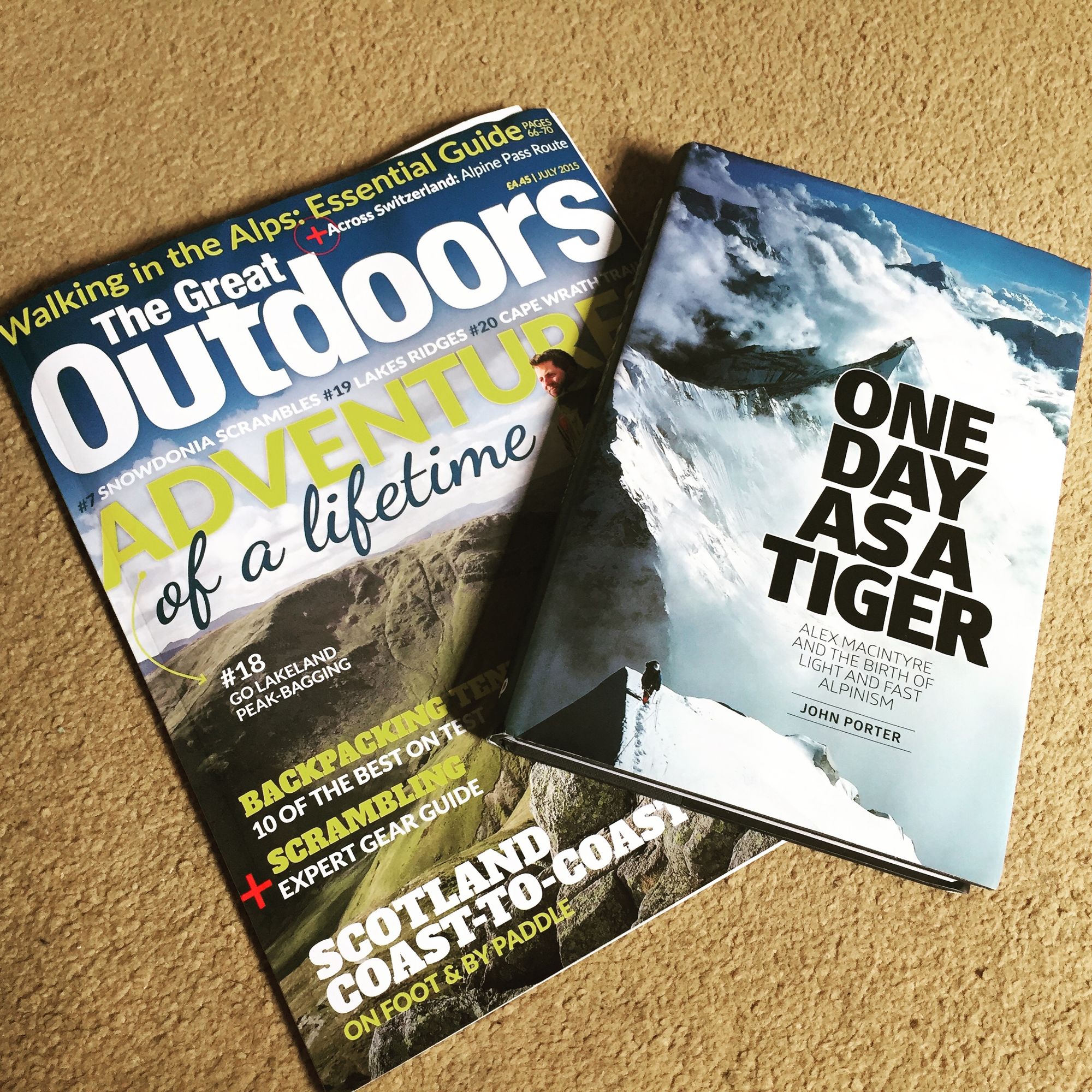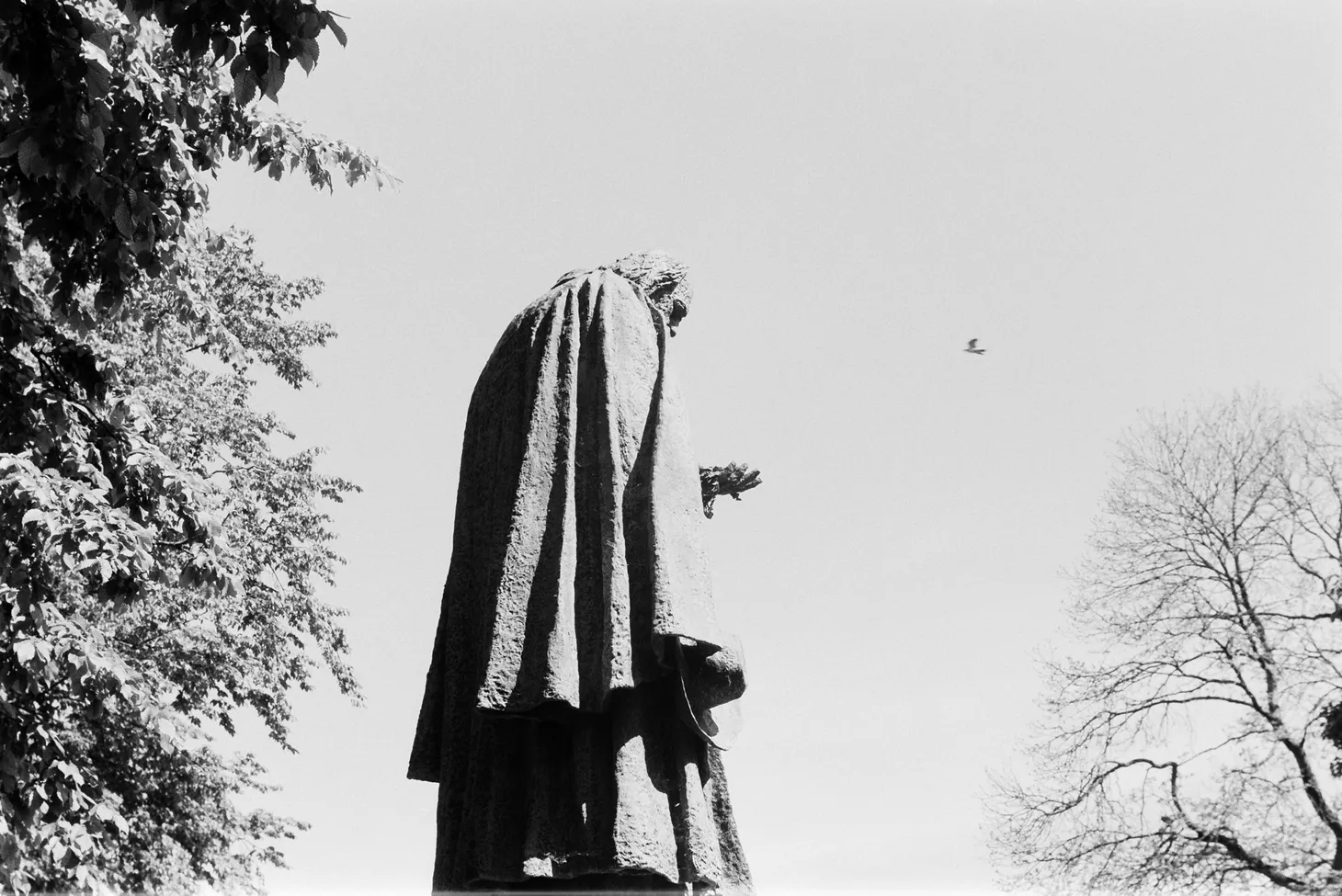Book review: One Day as a Tiger by John Porter

One Day as a Tiger
Alex MacIntyre and the birth of fast and light alpinism
By John Porter
As a student of the history of mountaineering, I’ve wanted to read this book for a while. A chance conversation with David Lintern a few months ago led to him kindly sending me his copy to read. Here are my thoughts and impressions on this remarkable book. TL;DR: it’s great, but not perfect.
A great deal changed in the climbing world during the 20th century. By 1964, all of the 8,000m peaks had been climbed (mainly in the old-school expedition siege style) and, gradually, a new question arose: what comes next?
This is a biography of Alex MacIntyre, but it’s also all about that question. It’s about the incredible changes to the world of alpinism that came about in the second half of the 20th century, shaping mountaineering and climbing for us today.
Alex MacIntyre was a climber and mountaineer active in the 1970s and early 1980s, until his death on Annapurna in 1982 at the age of twenty-eight. He was extremely bold, ruthless, took risks that others deemed unacceptable, and made full use of modern innovations and techniques to climb things nobody had climbed before – all in a lightweight, minimal, and simple style that became known as fast-and-light alpinism. Alpine-style ascents in the Greater Ranges stand in stark contrast to the traditional expedition style, which involves huge teams, vast amounts of equipment, and laying siege to a mountain or route until one or more members of the team get to the top. The key difference is that alpine-style climbers carry everything they need with them and aim for the summit in a single push: a simpler, cheaper, ‘purer’, but potentially more dangerous method. While Alex MacIntyre did not invent this technique, he applied it to routes that had never been attempted this way before and pushed it further than anyone else.
Today, alpine style has become de rigueur for cutting-edge ascents. The expedition siege style is still used, but in many cases a route is not considered to have been done ‘properly’ until it’s been done in an alpine, pure style. That’s Alex MacIntyre’s legacy.
The beginning of the book is compelling and, overall, it’s one of the most gripping and readable biographies in the genre I’ve come across. John Porter knew Alex MacIntyre well, and the exploration of his character is thorough. The style is generally more anecdotal than analytical, which fits well with the dramatic storytelling narrative. In places the energy seems to drop a little and there are some relatively flat passages, but overall the author builds and maintains interest extremely well. Reading about climbing can actually come across as boring but the focus on character helps to counteract this. The author builds up a comprehensive, multi-sided view of Alex MacIntyre as a person.
One common problem with books about climbing is that the nuances of this world often make little sense to outsiders. In that respect, this book is unlikely to appeal to a non-climbing audience. For example, the significant exploration of climbing ethics will make no sense to anyone who isn’t already well versed in the subject – let’s face it, climbing ethics are ridiculous at the best of times, and non-climbers may simply conclude that Alex MacIntyre was completely insane. But this book is squarely aimed at climbers. It assumes a relatively high level of existing technical knowledge, and doesn’t hand-hold the reader with explanations about how climbing works. For the target audience this approach works well. A typical reader of this book doesn’t need to be told what a karabiner or ice axe is.
I liked the skilful blend of biography and exploration of the wider context. For example, the expedition siege style of mountaineering is thoroughly analysed, focusing on Chris Bonington’s expeditions. This is critical to provide some context to Alex MacIntyre’s favoured technique.
In common with many other climbing biographies from this era, there’s a sense that the writer thinks this period was the most significant in history, and that things were better in the old days (made manifest by references to the days when people still served climbing apprenticeships, etc). This grated a little because you can argue the same point about pretty much any period in the history of mountaineering, and I feel that it flavoured parts of the book in an inappropriate way. I also happen to disagree with the writer’s point of view and I suspect many younger climbers will feel the same way. Fortunately this didn’t seriously detract from the book as a whole. Another criticism, while I’m at it: there are quite a lot of typos.
At its best, the book is superbly written and genuinely unputnownable. The chapters on the joint East-West expeditions, set in periods of heightened tensions with the USSR, are incredibly well written and evocative of the era. There are also articles actually written by Alex MacIntyre included within the text at appropriate moments and these are wonderfully, evocatively written.
The narrative inevitably builds towards Alex’s death in the mountains – an event which resonates both throughout the book and throughout Alex’s life. There’s a strong implication that Alex MacIntyre knew or suspected he would die in this grisly fashion (hit on the head by stonefall while climbing) but I found myself unsure how much of this was based on fact and how much it was massaged for the sake of extra drama. Nevertheless, there was a certain Shakespearean inevitability about the end to Alex MacIntyre’s story. As the plot of a novel it would work wonderfully, and the author does a grand job of weaving all the various complex issues into one thread. Again, the strong focus on Alex’s character really carries the story here. We’re shown how obsessive climbers can both damage as well as inspire those around them.
One aspect that I objected to is that the actual scene in which Alex MacIntyre is killed is not described or shown in chronological order, like the rest of the book. The buildup to it is described vividly, but then the narrative switches directly to the aftermath (although the event itself had been sketched out near the start of the book). Given the strong storytelling style, this jarred for me and was quite a disappointment – I felt the ‘plot’ of the book had been building towards this climactic moment, which was then skipped over. I can see why the author wanted to handle it in this way but it isn’t what the reader has been led to expect.
Overall I found plenty to love and comparatively little to dislike in this book. It had its points that irritated me, but it’s also one of the best books on 20th century climbing I’ve read in a long time. One Day as a Tiger has found its way onto the Boardman Tasker Prize short list this year and I think it has a very high chance of winning. If you have an interest in this important period during the history of mountaineering, you need to read this book.
Alex Roddie Newsletter
Subscribe here to receive my occasional personal newsletter in your inbox. (For the fun stuff, please consider subscribing to Alpenglow Journal instead!)



